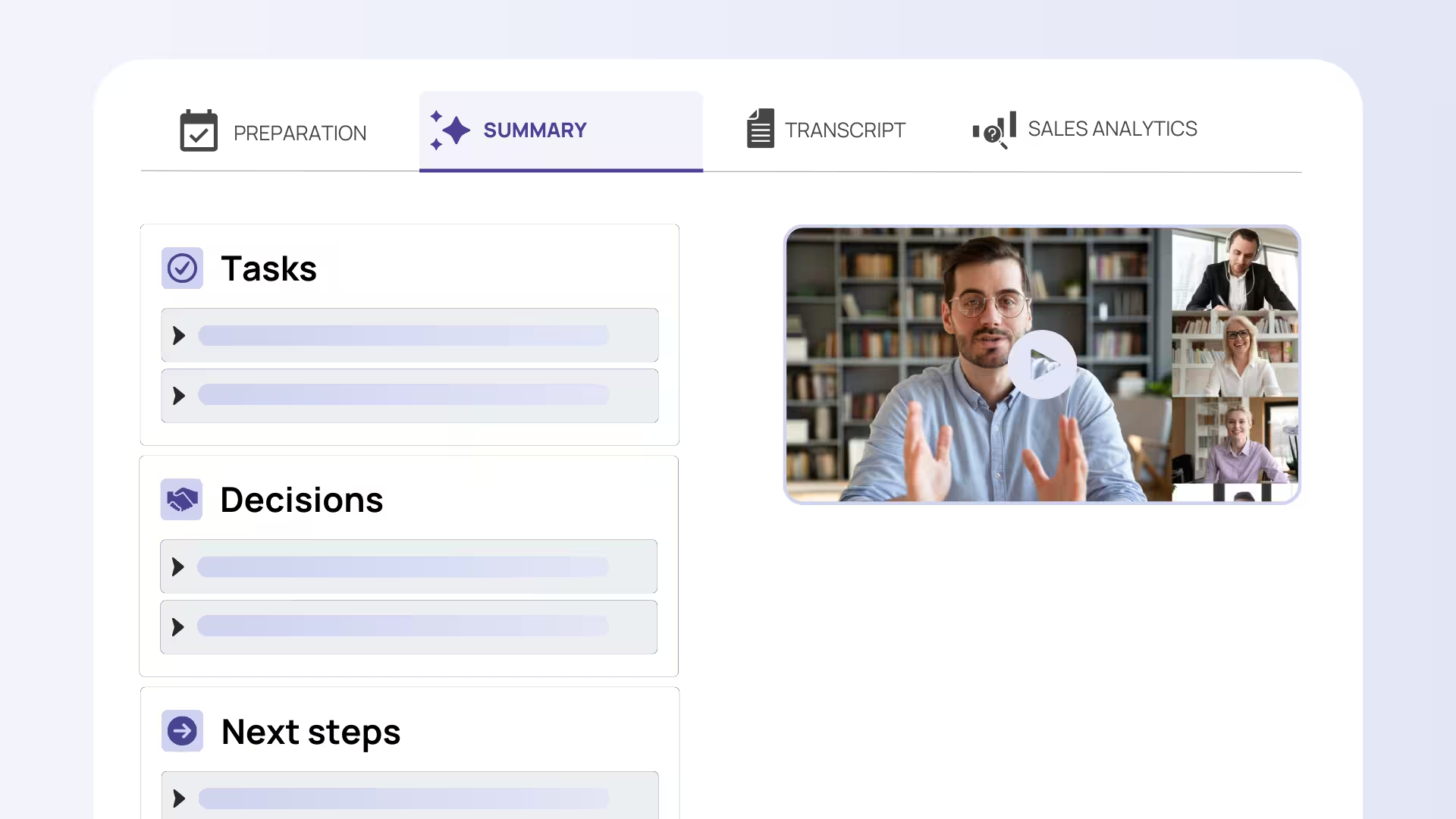Table of Contents
The weekly meeting sits at the heart of team coordination, yet many organizations struggle to make these gatherings truly productive. While teams invest countless hours in these regular touchpoints, research reveals that 67% of meetings are considered ineffective due to poor planning and unclear objectives. The difference between a time-wasting status update and a powerful team alignment tool often comes down to structure, engagement, and follow-through. When done right, weekly meetings become the engine that drives productivity, strengthens communication, and keeps everyone moving toward shared goals.
Understanding the Weekly Meeting — Purpose and Importance
What Is a Weekly Meeting?
A weekly meeting is a regularly scheduled team gathering designed to synchronize efforts, clarify priorities, and maintain accountability across projects. These sessions typically focus on three core areas: sharing updates on current work, planning upcoming tasks, and solving problems that require collective input. Whether conducted in person, virtually, or in a hybrid format, the primary purpose remains consistent—keeping everyone aligned and informed.
The most effective weekly meetings serve as a communication hub where team members can quickly assess project status, identify roadblocks, and adjust priorities based on new information. Unlike lengthy strategic planning sessions, these meetings emphasize concise updates and actionable outcomes that teams can implement immediately.
Why Weekly Meetings Matter
Weekly meetings have become the most common meeting cadence across industries globally, and for good reason. This frequency strikes an optimal balance between staying connected and avoiding meeting overload. Teams that meet weekly report better project momentum, clearer communication flow, and stronger working relationships compared to those with less regular touchpoints.
The impact extends beyond immediate project coordination. Well-run weekly meetings contribute to organizational culture by creating predictable opportunities for recognition, problem-solving, and team building. They also serve as early warning systems, allowing teams to identify and address issues before they become major problems.
However, the prevalence of weekly meetings also means there's significant room for improvement. When these sessions lack structure or clear purpose, they become a drain on productivity rather than a catalyst for success.

Creating a Focused and Effective Agenda
The Foundation of Productive Weekly Meetings — Agenda Creation
A clear, time-bound agenda shared at least 24 hours before the meeting transforms a potentially wandering discussion into a focused, productive session. The most effective agendas include five core elements: recent wins or successes, current challenges, key priorities for the upcoming week, decisions that need to be made, and time for questions or unexpected issues.
Different meeting goals require different agenda structures. A status update meeting might emphasize individual reports and progress tracking, while a brainstorming session would allocate more time for creative discussion and idea generation. Decision-making meetings need clear context, options, and time for deliberation before reaching conclusions.
Practical Agenda Templates and Examples
A typical 60-minute weekly meeting (that works) might follow this structure: 5 minutes for quick wins and celebrations, 20 minutes for individual updates, 15 minutes for discussing challenges and roadblocks, 15 minutes for planning next week's priorities, and 5 minutes for open questions or unexpected items.
Again as bullets:
- 5 min: everyone says what they achieved
- 20 min: individual updates
- 15 min: discuss challenges and roadblocks
- 15 min: plan priorities for next week
- 5 min: open questions and other
Teams can customize this framework based on their specific needs. A sales team might dedicate more time to pipeline reviews and deal updates, while a product development team might focus heavily on sprint planning and technical challenges. The key is maintaining consistent timing while adapting content to serve the team's primary objectives.
Building flexibility into the agenda helps handle unexpected urgent issues without completely derailing the meeting's focus. Reserve 10-15% of meeting time for unplanned discussions, but use a "parking lot" approach—capture important but off-topic items to address later rather than letting them consume the entire session.
Leveraging Technology to Manage Agendas
Modern agenda management tools like Fellow.app and Trello enable collaborative agenda creation, where team members can contribute items in advance and track action items across meetings. These platforms integrate with calendar systems to send automatic reminders and ensure everyone comes prepared.
AI-powered tools like Sally also help. Sally can analyze past meeting patterns and suggest agenda items based on recurring themes, action item follow-ups, and team priorities. This automation reduces the administrative burden on meeting organizers while ensuring important topics don't get overlooked week after week.

Boosting Productivity and Engagement in Weekly Meetings
Time Management and Running Efficient Meetings
Starting on time and ending early when possible sends a clear message about respecting everyone's schedule. Assign a facilitator or rotate the chairperson role to keep discussions on track and ensure all agenda items receive appropriate attention. Use visible timers or gentle verbal cues to maintain momentum without making participants feel rushed.
Strict time limits for each agenda item prevent any single topic from consuming the entire meeting. If a discussion requires more time than allocated, acknowledge its importance but schedule a separate session with the relevant stakeholders rather than forcing everyone to sit through extended deliberation.
Strategies to Foster Engagement and Inclusion
Brief icebreakers or check-ins help team members transition from individual work mode to collaborative discussion. These don't need to be elaborate—asking everyone to share one word describing their week or their biggest win since the last meeting can effectively build connection and engagement.
Round-robin speaking opportunities ensure every voice is heard, while anonymous virtual input tools help quieter team members contribute ideas without feeling put on the spot. Rotating meeting roles like note-taker, timekeeper, and facilitator creates shared ownership and prevents any single person from dominating the process.
Creating psychological safety is crucial for meaningful participation. Encourage open dialogue by responding positively to questions, acknowledging different perspectives, and avoiding blame when discussing challenges or setbacks.
Recognizing Successes and Maintaining Morale
Celebrating wins, even small ones, regularly boosts team motivation and reinforces positive behaviors. Dedicate a few minutes at the beginning of each weekly meeting to acknowledge individual and team accomplishments. This simple practice transforms meetings from problem-focused sessions into balanced discussions that recognize progress alongside challenges.
Using Technology to Enhance Engagement
Interactive digital whiteboards like Miro enable real-time collaborative brainstorming, while polling features in Zoom and Microsoft Teams provide instant feedback on decisions or priorities. These tools help maintain engagement in virtual meetings where it's easy for participants to become distracted.
Automatic transcription and summarization tools like Sally keep the focus on discussion rather than note-taking, while ensuring nothing important gets lost. When participants know key points are being captured automatically, they can concentrate fully on contributing to the conversation.
Beyond the Basics — Advanced Tips for Continuous Improvement and Difficult Conversations
Measuring Meeting Effectiveness Over Time
Track concrete metrics to assess whether your weekly meetings are actually improving team performance. Monitor attendance rates, action item completion percentages, and participant engagement levels. More importantly, measure how well meetings align with broader team objectives and key performance indicators.
Collect anonymous feedback monthly to identify pain points and opportunities for improvement. Ask specific questions about agenda relevance, time management, and whether participants feel their contributions are valued. Use these insights to iterate on meeting format and content.
Tailoring Meetings to Culture and Team Diversity
Different cultural backgrounds influence communication preferences and meeting participation styles. Teams with members from high-context cultures might benefit from more relationship-building time, while those from low-context cultures may prefer direct, task-focused discussions. Adapt your meeting structure to accommodate these differences and ensure all team members can contribute effectively.
Foster diversity of thought through structured turn-taking and deliberate efforts to include different perspectives in decision-making processes. This might mean explicitly asking for input from team members who haven't spoken or using written brainstorming before verbal discussion.

Handling Difficult Conversations and Conflict Resolution
Establish ground rules for respectful communication before tension arises. When conflicts do emerge, use structured frameworks like Nonviolent Communication or Interest-Based Relational Approach to separate people from problems and focus on finding solutions rather than assigning blame.
Recognize when sensitive topics are better addressed in private one-on-one meetings. The facilitator plays a crucial role in managing group dynamics and guiding difficult conversations toward constructive outcomes rather than letting them escalate or shutdown discussion.
Psychological Safety as a Cornerstone
Google's Project Aristotle research identified psychological safety as the most important factor in team effectiveness. Create an environment where team members feel safe admitting mistakes, asking questions, and proposing new ideas. This requires consistent leadership behavior that models vulnerability and responds positively to risk-taking and learning from failures.
Conclusion
Effective weekly meetings are powerful tools for team coordination, not inevitable time sinks. The key lies in thoughtful agenda creation, strong facilitation, and continuous improvement based on team feedback. By focusing on clear structure, inclusive participation, and measurable outcomes, teams can transform their weekly gatherings into engines of productivity and alignment.
Remember that great meetings don't happen by accident—they require intentional design and consistent execution. Start with a solid agenda, create space for every voice, celebrate successes alongside problem-solving, and regularly assess what's working. With these foundations in place, your weekly meetings will become the cornerstone of effective team collaboration rather than just another item on everyone's calendar.

Try meeting transcription now!
Experience how effortless meeting notes can be – try Sally free for 4 weeks.
Test NowOr: Arrange a Demo Appointment

.avif)


